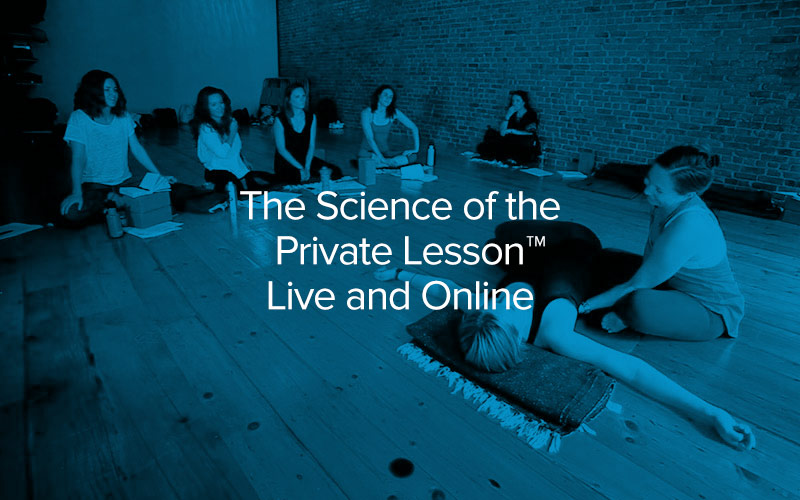I think that teaching the body and mind that is right in front of you in the moment is your only true job as a private yoga teacher.
From my teacher, Judith:
“The primary job of a yoga teacher is to mirror back the inner radiance and inherent goodness in each human being.” –Judith Lasater {Tweet me!}
If a person has relative health and balance in their body and in their life, it is ideal to give them a well rounded practice.
When you teach a group class it is definitely important to teach a well rounded practice, because there is no way of telling who is going to show up. You want to teach your public classes in a way that is balancing for everybody so it is important to include all the elements of a well rounded practice.
Let’s circle back for a moment and identify what might be included in a “well rounded practice”…
- a full range of spinal movements:
- backbend
- sidebend
- twist
- forward bend
- pranayama
- meditation
- philosophy
- warm up vinyasa
- standing poses
- neutral pelvis
- closed twist pelvis
- open pelvis
- standing balance poses
- seated poses
- inversions
- arm balances
- supine poses
- savasana
- OMming/chanting
- intention setting/dedication of practice
{Did I leave out anything important? Let me know in the comments below!}
But let me say this:: It is quite likely that your private student does not have relative health and balance in their body or in their life.
Even if your student is capable of doing a well rounded practice, it may not be what they need. In my private teaching, I prioritize offering a practice that will be balancing within the scope of my student’s whole life.
I have one student that is a great example of this. She is strong, flexible, and quite familiar with yoga and all aspects of the practice. She is open to, and capable of, moving through a well rounded Intermediate to Advanced asana class. However, she also has an incredibly busy life, and is extremely physically active outside of her yoga practice. She runs 5 or 6 times a week, and works out {quite aggressively} with a trainer twice a week.
I taught her a fun, intermediate, well rounded yoga practice twice a week for years. She liked our classes a lot, and had standing appointments with me twice a week.
She also often late canceled on me. She would just get too busy or overwhelmed to take the time for her practice. She was really sweet about it, and never gave me a hard time about paying for the session, but I didn’t feel great about it anyway. I had a nagging sense that even though she had two standing appointments with me each week, there was a lack of commitment to her practice. I had a feeling that I wasn’t reaching her as deeply as I could be.
Then I wrote the curriculum for my teacher training, The Science of the Private Lesson, and I realized that because she was so easy to teach, I wasn’t doing all the things with her that I recommend for meaningful, private teaching.
With students that are “easier” to teach sometimes more effort is required to figure out what they need. They can be more challenging to teach in a deep way. {Tweet me!}
The people that are difficult to teach {because they have injuries or are demanding in some other way} demand your intense presence and curiosity right away.
Once I began implementing the tools I teach in The Science of the Private Lesson, this student and I {very slowly} began to shift her practice to be one that is more balancing within the scope of her whole life.
From the outside it might seem like a strange practice. We spend quite a bit of time down on the floor, in supine stretches for her lower body. She loves to backbend, and it is energizing without being depleting {because most backbends are so close to the ground}, so that is a big part of our practice. Also, she loves to work on handstand scorpion {away from the wall!} because it is fun, so that is reason enough for me! We close with supported fish and some balancing pranayama, and then call it a day. 🙂
She is even more committed to the work, and never late cancels anymore, no matter how busy she is.
Tell me friends, how important do you think it is to teach a well rounded practice to your private yoga clients?


Wow, great post! This is really what I’m wanting to learn – getting down to what people (including myself) need, even when it’s not obvious. Though I find it quite a mystery of how to figure that out. How do you teach such an intuitive skill in your program?
I am so happy you liked it Erika! And you are right, figuring out what someone wants to do in their yoga practice, and what they actually need to be balanced, and how to reconcile those two things when they are different is INCREDIBLY challenging. That is why I have a whole 12 week course on the subject 🙂 http://fcyw.wpengine.com/online-training/ I’ve taken these intuitive skills and broken them down into tiny, actionable steps. Since they are taught over the course of three full months, you get all that time to implement the new theories in your teaching, and come back to me and the group with questions. Where do you live and teach? What other questions would you like for me to address? <3 FC